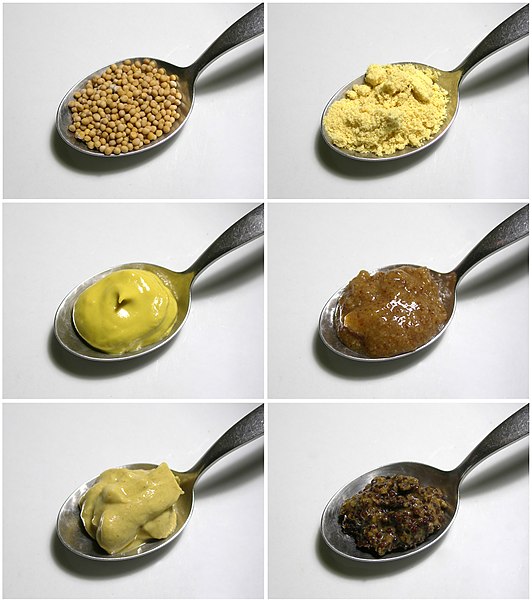


Món xào với gừng.

Món canh trứng muối.
Cải bẹ xanh hay cải xanh, cải canh, cải cay [vì có vị hăng cay, dùng chế biến mù-tạc (E: mustard; F: moutarde)]

Mustard seeds (top-left) may be ground (top-right) to make different kinds of mustard. The other four mustards pictured are a simple table mustard with turmeric coloring (center left), a Bavarian sweet mustard (center-right), a Dijon mustard (lower-left), and a coarse French mustard made mainly from black mustard seeds (lower-right).
Lá, thân và hạt cải bẹ xanh đều được dùng làm thực phẩm. Lá và thân có thể dùng để muối dưa, gọi là dưa muối.


Dưa cải muối chua.
----- Thư đã chuyển tiếp ----
|


No comments:
Post a Comment